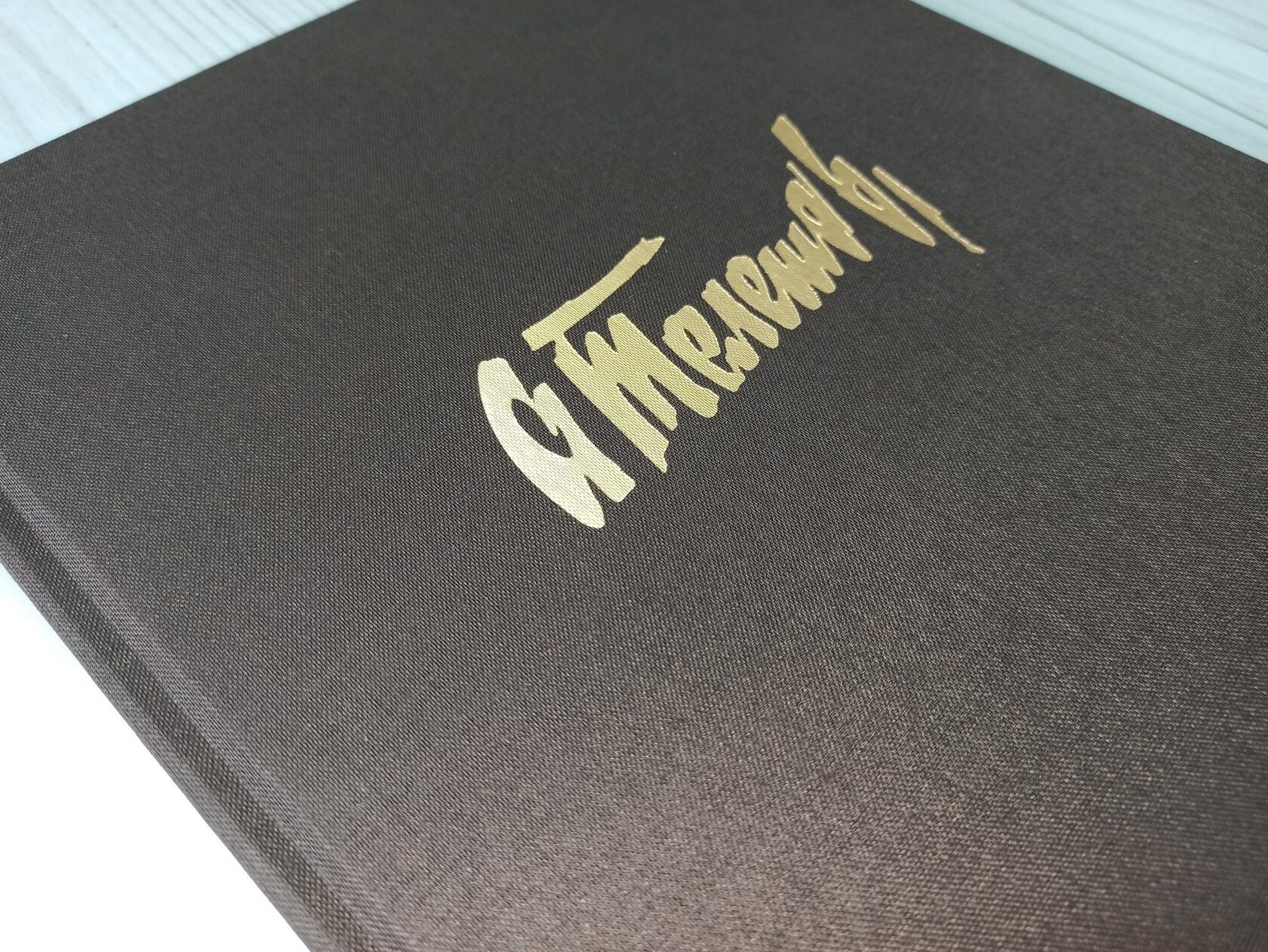Anatoliy Teleshov
Anatoliy Teleshov (1928-1990) - was a Russian and Soviet painter. He lived and worked in Vladivostok and is one of the founders of the Primorsky Region School of Painting.
Teleshov was born in 1928 in the small town of Klintsy in central Russia. At the age of six he was brought by his parents to the Russian Far East. After graduating from Vladivostok Art College in 1952, he continued his art education under the supervision of notable Moscow painters at the Academicheskaya Dacha. There he developed his unique painting style, which combines impressionistic technique with a realistic vision of nature.
Teleshov's works have been displayed in numerous exhibitions and are featured in the permanent collections of museums in United States, United Kingdom, Japan, China, Italy, Russia and other countries.

“For a creative artist, the most frightening experience is the moment he first touches a blank white canvas”.
“The natural environment is the source of an artist’s inspiration: I walk in the forest and collect every weathered thing that attracts me – whimsical roots, crooked branches, the skulls of animals bleached white with time. Nature is a wonderful teacher: look at the butterfly – the balance of small and large spots on its wings; if there is a yellow spot on one part, two or three smaller spots occur on back to complete the pattern. What perfect harmony!”
“Painting a landscape is not the same as making a photograph. When I am surrounded by nature I am happy, and this same delight is felt by the viewer who experiences my pictures. My mood is contagious!”
“Compared to the life of a human being, nature seems eternal, unchanging – the same oaks and birches and fir trees, the sky, the grass. What does change is the attitude of the artist, based on where he lives. When I am in the country for a long time my eyes assimilate the landscape and eventually I take it for granted and I forget what thrilled me when first I arrived. But, when I return to the city, memory starts its work; it recreates the fields, the birches, the meadows. And those recollections are extremely alive and brisk.”
“Visual perception is not enough: all your senses should be engaged. Mastery of form and color is only the beginning – I know that I can’t paint when my ears do not hear. I need sound: the stirrings of leaves, the singing of birds. If there is a lark singing above my head, my sketch will reflect this.”
“When I paint a child who lives in the country, I will look at his house, how he responds to his natural surroundings, how he picks up a flower. Only after this long observation do I begin the work on canvas.”
~ Anatoliy Teleshov
BIOGRAPHY
1928 Anatoliy Vasilyevich Teleshov was born on the 4th November in Klintsy town, Russia.
1934 The Family moved in Primorsky Krai.
1947-1952 The years of studying at the Art College in Vladivostok studied Primorsky Regional Art College. His teachers in painting: Mikhail Kostin and Vasily Zdanovich.
1952-1954 Teleshov worked as a school teacher of drawing in secondary school N 37 in Vladivostok.
1952 Teleshov entered the professional group of artist "Vsekokhudozhnik".
1954 His first visit to Academicheskaya Dacha named after I.Repin took place. Teleshov would work here several times during the following decades.
1961 The artist joined the Union of Artists of the USSR .
1961 Married Violetta Petrovna Plotnikova .
1962-1975 He become a member of the Primorsky organization of the Union of Artists.
1968 Participated in the Congress of Artists of Russia in Moscow (also participated in the IV, V, VI Congresses of Russian Artists).
1970 Since that time he would spend every warm season in Andreevka Village, Primorsky region.
1975 -1982/1984-1988 Teleshov was elected to the Chairman of the Board of the Primorsky organization of the Union of Artists.
1980 Teleshov was awarded the title of Honored Artist of the Russia.
1981-1982/1984 -1988 Teleshov was elected as a member of the Artistic expertise committee.
1985 Teleshov participated in work o the United Plenum of the Board of the Union of Artists of the USSR in Moscow. He was awarded the jubilee medal "For Valiant Labor" (1970) , the order "Badge of Honor" (1985).
1990 Died on the 23d of July, 23, buried in the Memorial Marine Cemetery in Vladivostok.
COLLECTIONS
Association “The Art of the Peoples of the World.” Zhuchinsk, Kazakhstan
Department of Culture of Administration of Primorye Territory, Vladivostok
Far Eastern Art Museum, Khabarovsk
Kamchatka Regional Art Museum, Petropavlovsk-Kamchatsky
Museum-Exhibition Center, Chita, Zabaykalsky Krai
Republican Exhibition Hall,Yoshak-Ola, Mari El Republic
Primorsky State Picture Gallery, Vladivostok
Sakhalin Regional Art Museum, Yuzhno-Sakhalinsk
Simferopol Art Museum, Simferopol
State Museum Exhibition Center "ROSIZO", Moscow
Vladimir K.Arseniev Museum of Far East History, Vladivostok
PRIVATE COLLECTIONS:
China, France, Italy, Japan, Republic of Korea, Russia, the United Kingdom, the United States.

EXHIBITIONS
SOLO EXHIBITIONS
1979 Exhibition on the 50th birthday of the artist and the 25th anniversary of his creative work. Exhibition Hall
of the Primorye Department of the Union of the Artists' Union, Vladivostok. Russia.
1982 Exhibition of Crimean plein air studies. Simeiz, Republic of the Crimea, Russia.
1983 Exhibition of paintings. Exhibition Hall of the Artists' Union, Moscow - Leningrad. Russia
Exhibition of Crimean plein air studies. Simeiz, Republic of the Crimea, Russia.
1989 Exhibition on the 60th birthday of the artist. Exhibition Hall of the Artists' Union, Vladivostok, Russia.
1991 Memorial exhibition from the collection of Primorye State Picture Gallery; State Museum of
V.K.Arsenyev; and from the collection of the artist's family. Primorye State Picture Gallery, Vladivostok.
1993 "Eight Pictures of the Artist". Private Gallery, Tokyo, Japan.
2007 "The Contemporary Russian Painter". Private Gallery, Taiwan, China.
2008 "Anatoliy Teleshov: the Russian Plein Air Artist:. Fine Arts Gallery, College of Marin, Kentfield,
California, USA .
2009 Memorial exhibition dedicated to the 80th birthday of the artist. Primorsky State Art Gallery, Vladivostok.
2021 Exhibition from collection of Primorsky State Art Gallery and the artist's family dedicated to the newly
published album - catalog "Anatoly Teleshov", 2021. Moscow, City Print. Primorsky State Art Gallery,
Vladivostok.
2022 "Symphony of Colors". Retrospective exhibition. Fine Arts Gallery. College of Marin. Kentfield. California.
1953 Exhibition of the artists of Primorye. House of Navy Оfficers, Vladivostok, Russia.
1954 XIIth regional exhibition of painting, graphic and sculpture. House of Navy Officers, Vladivostok, Russia.
1955 Exhibition of the works of the artists of the Far Fast. House of Navy Officers, Vladivostok, Russia.
XIVth regional exhibition of the artists of Primorye. House of Navy Officers, Vladivostok, Russia.
1956 Exhibition of the artists of the Siberia and the Far East. Art Museum, Irkutsk, Russia.
1957 XVth regional exhibition of arts on the 40th anniversary of the Great October Socialist Revolution. House
of Political Education, Vladivostok, Russia.
1958 Regional exhibition of arts on the 40th anniversary of the Military Forces of the USSR. House of Navy
Officers, Vladivostok, Russia.
All-Union exhibition of arts on the 40th anniversary of the Komsomol. Central Exhibition Hall, Moscow,
Russia.
1960 Regional exhibition of the artists of Primorye on the 100th anniversary of Vladivostok. Exhibition Hall of
Primorye Department of the Artists’ Union, Vladivostok, Russia.
Тhe first national art exhibition “Soviet Russia”. Central Exhibition Hall, Moscow, Russia.
1961 Republican Exhibition of Maritime Paintings. Moscow and Kaliningrad, Russia.
1962 Regional exhibition of arts on the 40th anniversary of the liberation of the Far East from the White
Guards. Vladivostok, Russia.
1964 The first regional (zones) exhibition "The Soviet Far East". Vladivostok, Russia.
1965 Spring regional exhibition of arts. Exhibition Hall of Primorye Department of the Artists’ Union.
Vladivostok, Russia.
1967 The second regional (zones) exhibition "The Soviet Far East". Vladivostok, Russia.
Regional exhibition of arts on the 50th anniversary of the Soviet Union. Vladivostok, Russia.
1968 Regional exhibition of arts on the 50th anniversary of the Military Forces of the USSR. Vladivostok,
Russia.
Regional Exhibition of Maritime Paintings. Vladivostok, Russia.
Autumn regional exhibition of arts. Exhibition Hall of Primorye Department of the Artists’ Union.
Vladivostok, Russia.
1969 The third regional (zones) exhibition "The Soviet Far East". Ulan-Ude, Russia.
1970 Exhibition of the artists of Primorye. Saint Petersburg (Leningrad), Russia. Regional exhibition of arts.
Vladivostok, Russia.
Regional exhibition of arts. Vladivostok. Russia.1971 Exhibition of painting from the Ural, Siberia and the Far East. Moscow, Russia.
Exhibition of the works of the Soviet artists gifted to the Ministry of the Merchant Fleet of the USSR.
Holmsk, Sakhalin, Russia.
1972 Republican exhibition of arts “Around the Motherland”. Central Exhibition
Hall, Moscow, Russia.
1974 The fourth regional (zones) exhibition “Soviet Far East”. Vladivostok, Russia.
1975 Regional exhibition on the 30th anniversary of the Victory over the Nazi Germany. Vladivostok, Russia.
1977 All- union exhibition of arts on the frontier – guards. Central Exhibition Hall, Moscow, Russia.
Republican exhibition of arts on the 60th anniversary of the Great October Socialist Revolution. Moscow,
Russia.
1978 Exchange exhibition of arts on the 40th anniversary of the Primorye Department of the Artists’ Union.
Saint Petersburg (Leningrad), Russia.
Republican exhibition of arts “Sea Roads of the Motherland”. Astrakhan, Russia.
1979 Republican exhibition of arts “We are Building the Big Amur Main-Line”. Ulan-Ude, Russia.
1980 The fifth regional (zones) exhibition “The Soviet Far East”. Museum - Exhibition Hall, Chita, Russia.
The sixth republican exhibition of arts “The Soviet Far East”. Central Exhibition Hall, Moscow, Russia.
1982 Republican exhibition of arts “The 50th anniversary of the Foundation of the Komsomolsk on the Amur”.
Komsomolsk–on-Amur, Russia.
1984 Republican exhibition of arts “The Painters of the Soviet Russia to the Builders of the Big Amur
Mainline”. Chita, Russia.
1985 All–Russian art exhibition “We Have Fought for and We Shall Uphold Peace”. Central Exhibition Hall,
Moscow, Russia.
The sixth regional (zones) exhibition “The Soviet Far East”. Vladivostok, Russia.
The seventh republican exhibition “The Soviet Russia”. Central ExhibitionHall, Moscow, Russia.
Regional exhibition of the artists on the 40th anniversary of the Victory over the Nazi Germany. Primorsky
State Picture Gallery, Vladivostok, Russia.
1988 Retrospective exhibition «Arts in Primorye. 1920 -1980». Primorsky State Picture Gallery, Vladivostok,
Russia.
1990 The seventh regional (zones) exhibition «Тhe Soviet Far East». Yakutsk, Russia.
1992 Exhibition of Primorye painting on the opening city “The City of Vladivostok». Primorsky State Picture
Gallery, Vladivostok, Russia.
Regional exhibition «Freedom in Creativity». Gallery «Artetage», Vladivostok, Russia.
Exhibition of the Association «The Art of the Peoples of the World». Zhuchinsk, Russia.
1993 Exhibition of Primorye paintings from the collection of the Primorsky State Picture Gallery. Primorsky
State Picture Gallery, Vladivostok, Russia.
1994 Exhibition of the Primorye paintings 1960-1970. Primorsky State Picture Gallery, Vladivostok, Russia.
Exhibition on the Victory Day. Primorsky State Picture Gallery, Vladivostok, Russia.
Regional exhibition «The Artists of Primorye in Andreevka Village». Exhibition Hall of the Artists’s
Union, Ussuriysk, Russia.
Exhibition on the 50th anniversary of the Primorye department of the Artists’ Union. Exhibition Hall of
Primorye Department of the Artists’ Union, Vladivostok, Russia.
1995 Regional exhibition “The Artists of Primorye in Andreevka Village”. Gallery “Artеtage”, Vladivostok,
Russia.
Exhibition on the 50th anniversary of the Victory Day. Exhibition Hall of Primorye Department of the
Artists’ Union, Primorsky State Picture Gallery, Vladivostok, Russia.
Exhibition on the 135th anniversary of the city Vladivostok. Exhibition Hall of Primorye Department of
the Artists’ Union, Vladivostok, Russia.
1996 Exhibition on the 30th Primorsky State Picture Gallery “A Collection of Primorye arts. Beginning...”.
Primorsky State Picture Gallery, Vladivostok, Russia.
Group exhibition of Primorye artists. Private Gallery “Korea”, Seoul, Republic of Korea.
1997 Exhibition “An Artist in a Mirror of a Portrait”. Primorsky State Picture Gallery, Vladivostok, Russia.
1998 International exhibition “The Finest Collections from Sister Cities' Museum - Broadening the Horizons”.
Pusan Metropolitan Art Museum, Republic of Korea.
Since 1999 Annual Russian Festival. Russian Center, San Francisco, USA.
2007 Group exhibition of Far Eastern Artists. Taiwan, China.
2008 Exhibition of maritime paintings “The Fisherman‘s Star”. Primorsky State Picture Gallery, Vladivostok, Russia.
"The City Called Urajio: History of Vladivostok thtough the eyas of Japanese." Niigata City Art Museum, Japan.2019 “The Painting and the Author.” Exhibition Hall of Primorye of the Artists' Union, Vladivostok, Russia.
2023 "Island Vladivostok". Gallery “Artеtage”, Vladivostok, Russia.

GALLERY
"Anatoliy Teleshov graduated from college in 1952 with the dream of continuing his training as a painter. However, he found an original way of growing his talent without entering any higher-educational institutions of art. His work at the Academicheskaya Dacha (later named for I. Repin), in Central Russia, helped him lay claim to his own education. From the first time he visited the “Academichka” in 1954, it became his home-place. Teleshov stayed there often, and every season ended in the formation of the unique creative groups of artists which appealed to him immensely. Participation in the work of these groups gave him a chance to broaden his views, which was very important for a young artist living in the Far East. Collaboration work, in the open air and in the studios, revived the ancient master-apprentice teaching approach."
~ Vitaliy Kandyba
Art historian, author of the essay for the book "Anatoliy Teleshov."

Oil on cardboard. 14 x 27.5 in.
Far Eastern Art Museum, Khabarovsk.
"An artist searching for his ways in art is trying to relate his works not only to the environment, but also to the context of contemporary art, thus declaring something for or against. The artists who represented the school of the "Academichka" started to differentiate between notions of "Russian" and "Soviet" painting. Teleshov belonged to the artists who didn’t want to identify themselves with "Soviet" art and strove for national self-identification. Teleshov’s orientation to national tradition demanded an appropriate theme. In the early 1960s, a theme of “common people” living in the country started to claim itself in literature. The topic of the modern Russian countryside also became a theme in painting. Later, Aleksandr Solzhenitsyn, in his "Matrena’s Farmstead," presented a crystal country prose within the frame of Soviet literature. This theme offered."
~ Vitaliy Kandyba
"The best way to comprehend his position is to compare two portraits from the 1960s, “Nadya” (1960), and “Katya” (1965). The girls’ social background remains anonymous, which was customary for Soviet painting in the 1940s and 1950s. The artist focuses on the human aspect of his characters. Nadya is a dark-complexioned girl with a yoke on her shoulders. She is shown in movement, with a summer landscape in the background. The girl is presented as a transient non-persistent fragment so familiar in Impressionist painting. Her white triangular scarf and summer frock accumulate a strong torrent of light. The figure of the girl is akin to a patch of sunlight on a background of green. “Nadya” is presented like a metaphor of a Russian summer in the country. It is useless to search for psychological characteristics of the girl in the portrait, since the plein-air and psychological approaches stay in opposition to each other. As a rule on canvases where the landscape plays a dominant role, the inner features of the character step into the background."
~ Vitaliy Kandyba

"The portrait “Katya” is the best illustration of this statement. Its coloration is determined by the laws of indoor painting. “The breath of nature,” indispensable to Impressionism, is hardly perceived. Soft evening light is dispersed in the studio of the artist who is completely concentrated on the reflection of a female’s soul. The arrangement of color composed of blue, dark blue, and pearl-gray emphasizes the beauty of the girl’s face. The brushstrokes are legible but soft. It is clear that the artist is familiar with the exquisite culture of shadow painting. “Sounding” color coming from the outside doesn’t interfere with the song of the girl’s inner world."“Katya” radiates the light of her soul and her crystal femininity. These two portraits, though “written” in the same period, are very different and define Teleshov as a character in a Russian folk-tale in a moment of decision-making standing at the crossroads. The young artist seems to conceal two equal but opposed predispositions. He might develop himself as an artist of the inner life. "
~ Vitaliy Kandyba


Oil on canvas. 15.7 x 39.3 in.
Primorsky State Picture Gallery, Vladivostok, Russia.

Oil on canvas. 32.6 x 35.4 in.
Primorsky State Picture Gallery, Vladivostok, Russia.
~ Vitaliy Kandyba

Oil on canvas. 28 x 32.2 in
involved in meeting this challenge. He continued to develop his plein-air technique all his life. We
can find confirmation in heaps of sketches carefully kept by the artist’s family. We can appreciate his
hard work over his famous paintings only through getting acquainted with the large volume of sketch-
es, supporting the idea of self-perfection."
~ Vitaliy Kandyba

Oil on cardboard. 12.2 x 25.6 in.
Primorsky State Picture Gallery, Vladivostok, Russia.
"In the 1960s Teleshov’s works acquired a new characteristic feature. He traveled a lot and visited a great number of places in Primorye, but his visit to Nakhodka town turned into something special. This place impressed Teleshov more than his native city. We can find many works inspired by the Nakhodka landscape and very few of Vladivostok. We realized this disproportion in his creative heritage when it was too late to address the question to the artist. Now it is clear that the reason for this preference lies in the fact that he noticed much more nature in Nakhodka than in Vladivostok. The town did not overwhelm nature, it fitted it perfectly. The houses scattered on the hills look cozy and form the breathing rhythm of a mosaic. The presence of people is only incidental. The main part in the landscape of the town is played by Nature; it is the main key to his works."
~ Vitaliy Kandyba
"... I remember one of the hot summer days in Andreevka village... The sun beams fall vertically, and the green grass clings to the wall more densely - into the soothing shadow. Above the river is a glass haze. In such heat, artists usually relax in shady arbors, on verandas, and prepare for evening sketches. Teleshov came from the forest with a full basket of mushrooms, flushed from a long walk, with cobwebs tangled in thin strands of hair. His face shone with almost boyish joy when he poured ruddy saffron milk caps and russula, glossy butternut squash, and aspen mushrooms onto the table. In all this sparkling play of colors, the fresh breath of nature lived - and the unsteady calm of the July night, and the wild chill of fern plants ... hastily, so as not to miss this excited sensation of beauty, the artist takes a brush and approaches the canvas ... This is how one of Teleshov's most interesting still life was born.."
~ V. Semkin (the artist and poet)


"In the 1970s, Teleshov visited a small village, Andreevka, in the southern part of the Primorye territory. Visiting this beautiful spot became a crucial event in his life. From that point, Teleshov visited this place regularly every season, staying there for several months, sometimes from early spring until the first autumn frost, waiting for snow to cover the ground. The place was worthy of admiration, with all the beauty of the southern part of Primorye, and absolutely different from its wild central and northern parts, with their severity, monotony, and restraint. Nature in Andreevka wears a different attire; the landscape is round in form because it repeats the lines of the bays and the nooks. The expanse of Nature is neither pressing nor distressing; it lacks the extremes. The sea penetrates the land, thrusting into the soil with its bays, nooks, and straits between the islands. Villages, settlements, fish factories, piers, forts, and scientific stations are scattered along the beaches. People are exposed to the sea, life itself comes from the sea, and the sea constitutes an essential part of the landscape. Primorye in Russian actually means “a territory near the sea.” In Andreevka you realize this meaning literally."
~ Vitaliy Kandyba

Oil on cardboard. 30.3 x 26.3 in.
Primorsky State Picture Gallery, Vladivostok, Russia.
~ Vitaliy Kandyba
The Pacific Regatta. Rest Time. 1990
Oil on canvas. 31.4 x 51 in

~ Anatoliy Teleshov
The album - catalog "Anatoliy Teleshov" was published in Moscow in 2021.
Authors - Vitaliy Kandyba, Olga Borisov.The book is bilingual in - English and Russian , with 140 high quility color images and photos, catalogue raisonné, and an introduction article written by a well-known Russian art historian Vitaliy Kandyba.
The book is beneficial to art historians, students, teachers of art, educational institutions and all fine arts lovers.
Publisher: Cityprint, Moscow. First Edition (April, 2021)
Language : English, Russian
Hardcover, Dust – jacket : 200 pages
ISBN : 978-5604434710
Item Weight : 2 pounds
Dimensions : 9 x 1 x 11.5 inches
The book is available for purchase on:
Globus Books
Amazon. Teleshov Anatoliy
Etsy. TeleshovBook
Book Passage

"The evolution of Teleshov’s art shows the process of climbing the steps of the decades in the direction of growing his skill and his reach to perfection. That was the way of returning to himself, the way of gaining an individual view of life that left a bright and memorable sign in the history of Russian painting."
~ Vitaliy Kandyba

